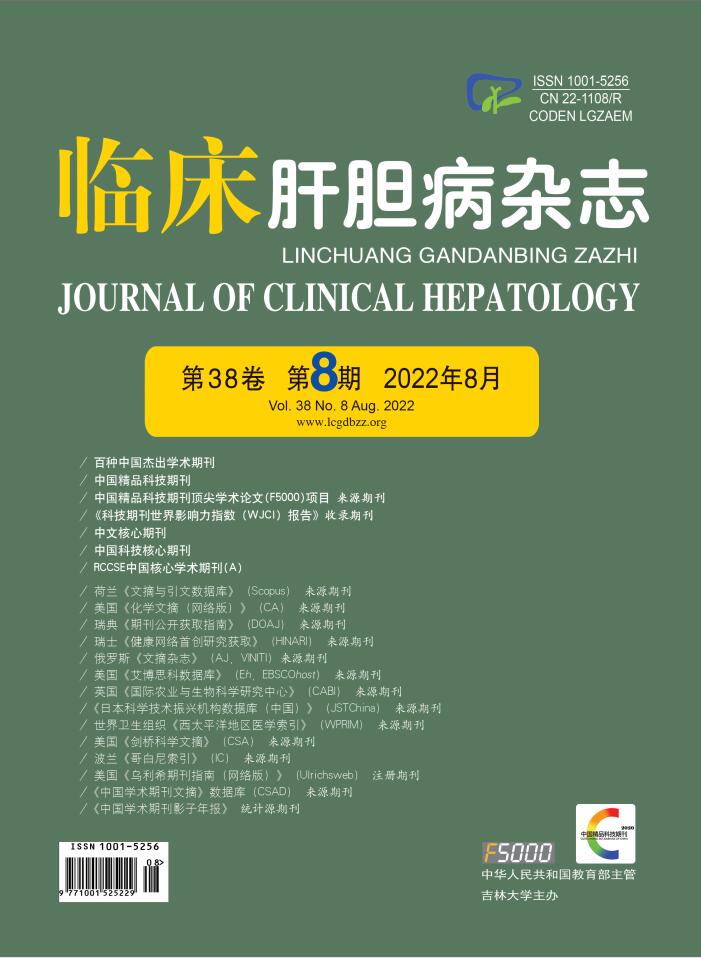| [1] |
TERRAULT NA, BZOWEJ NH, CHANG KM, et al. AASLD guidelines for treatment of chronic hepatitis B[J]. Hepatology, 2016, 63(1): 261-283. DOI: 10.1002/hep.28156. |
| [2] |
DENG R, SUN J. An excerpt of guidance for design and endpoints of clinical trials in chronic hepatitis B-Report from the 2019 EASL-AASLD HBV Treatment Endpoints Conference[J]. J Clin Hepatol, 2020, 36(3): 522-526. DOI: 10.3969/j.issn.1001-5256.2020.03.009. |
| [3] |
TERRAULT NA, WAHED AS, FELD JJ, et al. Incidence and prediction of HBsAg seroclearance in a prospective multi-ethnic HBeAg-negative chronic hepatitis B cohort[J]. Hepatology, 2022, 75(3): 709-723. DOI: 10.1002/hep.32231. |
| [4] |
HOFMANN L, FORSCHNER A, LOQUAI C, et al. Cutaneous, gastrointestinal, hepatic, endocrine, and renal side-effects of anti-PD-1 therapy[J]. Eur J Cancer, 2016, 60: 190-209. DOI: 10.1016/j.ejca.2016.02.025. |
| [5] |
MOTZER RJ, RINI BI, McDERMOTT DF, et al. Nivolumab plus ipilimumab versus sunitinib in first-line treatment for advanced renal cell carcinoma: extended follow-up of efficacy and safety results from a randomised, controlled, phase 3 trial[J]. Lancet Oncol, 2019, 20(10): 1370-1385. DOI: 10.1016/S1470-2045(19)30413-9. |
| [6] |
PU D, YIN L, ZHOU Y, et al. Safety and efficacy of immune checkpoint inhibitors in patients with HBV/HCV infection and advanced-stage cancer: A systematic review[J]. Medicine (Baltimore), 2020, 99(5): e19013. DOI: 10.1097/MD.0000000000019013. |
| [7] |
ZHANG X, ZHOU Y, CHEN C, et al. Hepatitis B virus reactivation in cancer patients with positive Hepatitis B surface antigen undergoing PD-1 inhibition[J]. J Immunother Cancer, 2019, 7(1): 322. DOI: 10.1186/s40425-019-0808-5. |
| [8] |
LEE PC, CHAO Y, CHEN MH, et al. Risk of HBV reactivation in patients with immune checkpoint inhibitor-treated unresectable hepatocellular carcinoma[J]. J Immunother Cancer, 2020, 8(2): e001072. DOI: 10.1136/jitc-2020-001072. |
| [9] |
SETO WK, HUI AJ, WONG VW, et al. Treatment cessation of entecavir in Asian patients with hepatitis B e antigen negative chronic hepatitis B: a multicentre prospective study[J]. Gut, 2015, 64(4): 667-72. DOI: 10.1136/gutjnl-2014-307237. |
| [10] |
LIEM KS, FUNG S, WONG DK, et al. Limited sustained response after stopping nucleos(t)ide analogues in patients with chronic hepatitis B: results from a randomised controlled trial (Toronto STOP study)[J]. Gut, 2019, 68(12): 2206-2213. DOI: 10.1136/gutjnl-2019-318981. |
| [11] |
RAJORIYA N, COMBET C, ZOULIM F, et al. How viral genetic variants and genotypes influence disease and treatment outcome of chronic hepatitis B. Time for an individualised approach?[J]. J Hepatol, 2017, 67(6): 1281-1297. DOI: 10.1016/j.jhep.2017.07.011. |
| [12] |
NIU JQ, ZHANG H, YOU H, et al. Clinical considerations in the design of clinical trial for innovative hepatitis B drugs[J]. Chin J Hepatol, 2020, 28(8): 654-657. DOI: 10.3760/cma.j.cn501113-20200722-00412. |
| [13] |
State Food and Drug Administration. Technical guidelines for the clinical trials of antiviral drugs for chronic hepatitis B[J]. Chin J Viral Dis, 2018, 8(4): 241-247. DOI: 10.16505/j.2095-0136.2018.0038. |
| [14] |
European Association for the Study of the Liver. EASL 2017 clinical practice guidelines on the management of hepatitis B virus infection[J]. J Hepatol, 2017, 67(2): 370-398. DOI: 10.1016/j.jhep.2017.03.021. |
| [15] |
TERRAULT NA, BZOWEJ NH, CHANG KM, et al. AASLD guidelines for treatment of chronic hepatitis B[J]. Hepatology, 2016, 63(1): 261-283. DOI: 10.1002/hep.28156. |
| [16] |
TERRAULT NA, LOK ASF, McMAHON BJ, et al. Update on prevention, diagnosis, and treatment of chronic hepatitis B: AASLD 2018 hepatitis B guidance[J]. Hepatology, 2018, 67(4): 1560-1599. DOI: 10.1002/hep.29800. |
| [17] |
SARIN SK, KUMAR M, LAU GK, et al. Asian-Pacific clinical practice guidelines on the management of hepatitis B: a 2015 update[J]. Hepatol Int, 2016, 10(1): 1-98. DOI: 10.1007/s12072-015-9675-4. |
| [18] |
LIAW YF, KAO JH, PIRATVISUTH T, et al. Asian-Pacific consensus statement on the management of chronic hepatitis B: a 2012 update[J]. Hepatol Int, 2012, 6(3): 531-561. DOI: 10.1007/s12072-012-9365-4. |
| [19] |
REN S, ZHENG SJ. An excerpt of APASL guidance on stopping nucleos(t)ide analogues in chronic hepatitis B patients (2021)[J]. J Clin Hepatol, 2022, 38(1): 78-80. DOI: 10.3969/j.issn.1001-5256.2022.01.011. |







 DownLoad:
DownLoad: